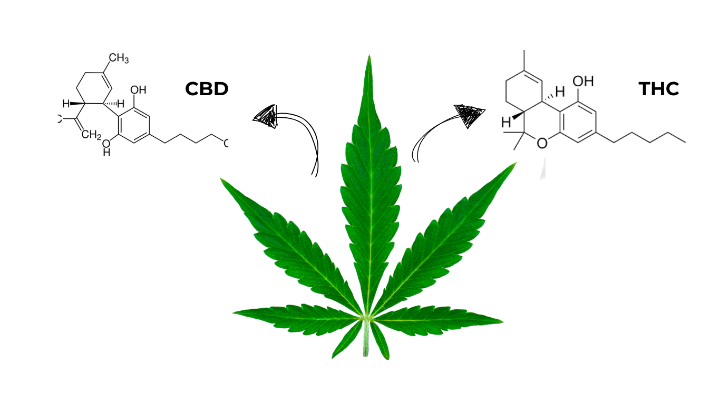¿Pertenecen el cáñamo y el cannabis al mismo género?
En el amplio mundo del cannabis, es crucial entender las diferencias entre dos términos aparentemente similares pero con aplicaciones y propiedades distintas: el cáñamo y el cannabis. ¿Qué los hace únicos? ¿Cómo se relacionan entre sí?
El Cáñamo: Una vez considerado un cultivo vital para diversas industrias, el cáñamo, científicamente conocido como Cannabis sativa, es una variedad de planta cultivada principalmente por su fibra, semillas y aceite. A diferencia de su prima cercana, el cannabis, el cáñamo contiene niveles mínimos de THC (tetrahidrocannabinol), el compuesto psicoactivo del cannabis, y altos niveles de CBD (cannabidiol), un componente no intoxicante con varios beneficios para la salud.
El cannabis: Por otro lado, el cannabis se refiere específicamente a las flores secas y las hojas de la planta de cannabis femenina, que contienen concentraciones significativas de THC y, por lo tanto, poseen propiedades psicoactivas. Aunque algunos países han legalizado el cultivo de cannabis con fines medicinales bajo supervisión gubernamental, su uso recreativo sigue siendo ilegal en la mayoría de los lugares.
Diferencias clave
Composición química: El cáñamo se caracteriza por su bajo contenido de THC y alto contenido de CBD, mientras que el cannabis contiene proporciones significativas de THC, lo que la hace psicoactiva.
Usos: El cáñamo se utiliza principalmente en la industria textil, alimentaria, cosmética y de construcción debido a su versatilidad y propiedades beneficiosas. Por otro lado, el cannabis se consume principalmente con fines recreativos o medicinales debido a sus efectos psicoactivos.
Legalidad: El cáñamo, con su bajo contenido de THC, es legal en muchos países y se cultiva ampliamente para diversos fines industriales y comerciales. El cannabis, sin embargo, enfrenta restricciones legales debido a su potencial psicoactivo y su uso recreativo.
Potencial medicinal y terapéutico
Tanto el cáñamo como el cannabis tienen propiedades medicinales significativas. Se ha demostrado que en general tienen beneficios para tratar una variedad de condiciones de salud, que van desde el glaucoma y la epilepsia hasta el cáncer y la esclerosis múltiple. Sin embargo, es importante tener en cuenta que el cannabis también conlleva riesgos para la salud mental y cognitiva, especialmente con un uso prolongado o en dosis altas.
¿Qué son las flores de cannabis?
Cannabis flowers, also known as buds or blossoms, are the reproductive structures of the cannabis plant (Cannabis sativa, Cannabis indica, or Cannabis ruderalis). They are the parts of the plant that contain the highest concentration of active chemical compounds, including cannabinoids, terpenes, and flavonoids.

Composición Química de las flores de cannabis
Las flores de cannabis son verdaderamente complejas en su composición química. Los cannabinoides son los compuestos más estudiados y destacan por su papel en los efectos fisiológicos del cannabis.
Además de los cannabinoides, las flores de cannabis también contienen una amplia variedad de terpenos, que son compuestos aromáticos responsables del aroma distintivo de cada variedad de cannabis. Estos terpenos también pueden tener efectos fisiológicos, complementando los efectos de los cannabinoides.
Usos Terapéuticos
El cannabis ha sido utilizado con fines medicinales durante miles de años, y las flores son una de las formas más comunes de consumirlo con este propósito. Se ha demostrado que los cannabinoides presentes en las flores de cannabis tienen una variedad de efectos terapéuticos, incluyendo:
- Alivio del dolor: El cannabis ha sido utilizado para tratar el dolor crónico, neuropático y relacionado con enfermedades como la artritis.
- Reducción de la inflamación: Los cannabinoides tienen propiedades antiinflamatorias que pueden ser beneficiosas para tratar enfermedades inflamatorias crónicas.
- Control de las náuseas y el vómito: El cannabis puede ayudar a reducir los síntomas de náuseas y vómitos asociados con la quimioterapia y otras condiciones médicas.
- Mejora del apetito: El cannabis ha sido utilizado para estimular el apetito en pacientes con pérdida de peso involuntaria, como los pacientes con VIH/SIDA o cáncer.
- Reducción del estrés y la ansiedad: Algunas variedades de cannabis pueden tener efectos ansiolíticos y relajantes que pueden ser beneficiosos para tratar trastornos de ansiedad.
Usos recreativos
Además de sus usos terapéuticos, las flores de cannabis también son apreciadas por sus efectos recreativos. El THC presente en las flores de cannabis es responsable de los efectos psicoactivos que muchos usuarios buscan experimentar. Estos efectos pueden incluir una sensación de euforia, relajación, creatividad y alteración del tiempo y la percepción sensorial.

La flor de cáñamo, también conocida como flor de CBD, es el fruto del cáñamo industrial, una cepa de la planta Cannabis Sativa. A pesar de su parecido con los cogollos de marihuana, las flores de cáñamo contienen un bajo o inexistente contenido de THC (tetrahidrocannabinol), el componente psicoactivo de la marihuana, y altos niveles de otros cannabinoides como el CBD (cannabidiol) y el CBG.
En conclusión, las flores de cannabis, el cáñamo y el cannabis representan facetas diversas de una planta con una historia rica y compleja. Si bien el cáñamo se destaca por su versatilidad industrial y beneficios para la salud, el cannabis ofrece una gama más amplia de efectos, tanto recreativos como terapéuticos. Comprender las diferencias entre estas variedades es esencial para aprovechar al máximo los beneficios del cannabis de manera segura y legal.